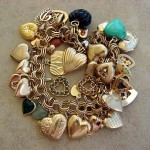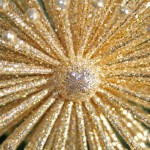Gold Fun Facts
 A while back I purchased a diamond and gemstone testing machine. Its capabilities turned out to be a bit more than I needed for my little operation but at the time I had no idea what my needs would be. I bought it on line. Turns out it's quite a handy and useful gadget. Anyway I must have signed up for their mailing list because this week I began receiving newsletters from them. Volume #1 was filled with a bunch of gold trivia and I thought I would share with you. This is reprinted without their permission but hopefully the "ask forgiveness later" philosophy will apply should they contact me with a lawsuit.
A while back I purchased a diamond and gemstone testing machine. Its capabilities turned out to be a bit more than I needed for my little operation but at the time I had no idea what my needs would be. I bought it on line. Turns out it's quite a handy and useful gadget. Anyway I must have signed up for their mailing list because this week I began receiving newsletters from them. Volume #1 was filled with a bunch of gold trivia and I thought I would share with you. This is reprinted without their permission but hopefully the "ask forgiveness later" philosophy will apply should they contact me with a lawsuit.
- All the gold that has ever been refined throughout history could be placed in a cube measuring 65.5 feet (20 meters) on a side.
- Less the 50% of all the world's gold is still in the ground - 75% of all gold ever produced has been extracted since 1910. It has been estimated that all the gold in the world that has ever been refined would form a single cube 20 m (66 ft) a side.
- Oceans are the greatest single reservoir of gold at Earth's surface, containing approximately eight times the total quantity of gold mined to date. However, the current cost of extracting it is more than the gold is worth.
- Since the 1880s South Africa has been the source for a large proportion of the world's gold supply. Production in 1970 accounted for 79% of the world supply, producing about 1,000 tones, however production in 2004 was 342 tones. This decline was due to the increasing difficulty of extraction and changing economic factors affecting the industry in South Africa. Nearly 40 percent of all gold ever mined was recovered from South African rocks.
- During the 19th century, gold rushes occurred whenever large gold deposits were discovered, including the California, Colorado, Otago, Australia, Witwatersrand, Black Hills, and Klondike gold rushes. Because of its historically high value, much of the gold mined throughout history is still in circulation in one form or another.
-
More than 90 percent of all gold ever used has been mined since 1848, when gold was discovered at Sutter's Mill, California, sparking the greatest gold rush of all time.
- Most gold—78% of the yearly gold supply—is made into jewelry. Other industries, mostly electronics, medical, and dental, require about 12 percent. The remaining 10 percent of the yearly gold supply is used in financial transactions.
- Gold nuggets are solid lumps of gold. Nuggets are rare, making up less than 2% of all native gold ever mined.
- The largest gold nugget ever found weighed 195 pounds.
- It has been estimated that, worldwide, the total amount of gold ever mined is 152,000 metric tons, only enough to fill 60 tractor trailers. In comparison, each year 907 million metric tons of iron are produced worldwide. This is equivalent to 6,000 times the total gold produced throughout history.
- The term "gold" comes from an old Anglo-Saxon world 'gelo', or yellow.
- Gold bars were made as early as 4000 BC.
- Gold is able to conduct electricity and heat, gold never rusts.
- Chemical symbol is Au from the Latin word 'aurum' which means "shining dawn".
- Copper and gold were the first metals to be discovered by man.
- Native Scottish gold is the purest, at 22.8 carats.
- Gold is so ductile that an ounce of gold can be stretched to a length of over fifty miles or beaten into a sheet to cover a hundred square feet.
- Gold leaf may be only 0.18 microns (seven millionths of an inch) thick; a stack of 7,055 sheets would be no thicker than a dime.
- A cubic foot of gold weighs approximately half a ton.
- Gold can be made into thread and used in embroidery.
- The visors of astronauts' space helmets receive a coating of gold so thin (0.00005 millimeters, or 0.000002 inches) that it is partially transparent. The astronauts can see through it, but even this thin layer reduces glare and heat from sunlight.
- Precious metals are measured in troy ounces. This comes from the French town of Troyes where this unit of measurement was first used. A troy ounce is approximately 10% heavier than an avoirdupois ounce.
- The increased gold production, beginning about 1890 and extending to date, is held responsible for much of the increase in the cost of living, due to the rapid rise in the price of commodities. Among many causes advanced to explain the situation this gold production theory is the favorite with a certain school of public men and economists.
Summary

Article Name
Gold Fun Facts
Description
Gold mineral nugget trivia reprinted from IGEM Instruments newsletter.
Author
Fitzcharming
More from my site
Category: Facts & Useful Info










